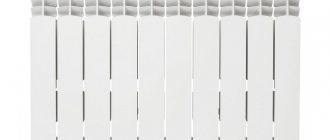Buying guide - which biofireplace to buy?
If you can't install a traditional fireplace in your home, consider purchasing a biofireplace. It does not require connection to a ventilation system; room ventilation is sufficient. Don't know which bio-fireplace to choose? You will know everything after reading the buying guide.
Installation method
Based on the installation method, there are three types of biofireplaces: free-standing, hanging and built-in. The first, as the name suggests, can be placed anywhere, not necessarily next to a wall, and can also be moved from place to place. These types of biofireplaces are practical; among them you can find models that are small enough that you can even place them on a table.
They don't generate a lot of heat but are a great decoration. Hanging fireplaces are a little more difficult to install as they require drilling several holes in the wall. These models can be hung anywhere, they do not significantly limit the free space, so they are good for small spaces. Built-in biofireplaces resemble traditional ones. Often such models are suitable for installation in a corner.
Closed or open hearth?
Biofireplaces come with closed and open fireplaces. It is true that glass can limit the amount of heat released into a room, but it is a safer solution in homes with small children and animals. In an open hearth, the flame is not shielded, and getting too close to it can lead to burns. When deciding which fireplace to buy, you should consider the safety of your household.
Material of execution
The material of biofireplaces is usually made of stainless steel, so it is resistant to corrosion. It is powder coated in a variety of colors so you can easily find a model that matches the rest of your interior fittings. The fireplace door should be equipped with heat-resistant glass that is resistant to breakage and easy to keep clean. There are also models with an MDF body and a ceramic front panel, which look no less elegant. The most important thing is that the biofireplace is not subject to mechanical damage.
It is true that a biofireplace does not act as the main source of heat in the house, but after lighting a fire in the hearth, the room temperature usually rises by several degrees Celsius. The efficiency of a biofireplace depends on its thermal efficiency (expressed as a percentage) and heating power. In the case of smaller models, it will not be more than approximately 3000 W, but there are also much more powerful biofireplaces, more than 8000 W. Moreover, some allow you to adjust the heating power within a certain range, and this allows you to independently determine the efficiency of heating the room.
Dimensions and weight
By checking the overall dimensions of the bio-fireplace, you can make sure that you can install it in the previously chosen location. As a standard, the height of biofireplaces does not exceed 100 cm, as does the width. Their weight usually ranges from several to several tens of kilograms (but sometimes exceeds 100 kg). The heavier the model you choose, the more difficult it is to assemble it (often it is impossible to assemble it yourself).
Fuel
You need bioethanol to burn in a biofireplace. It can be in gel or liquid form. It is an odorless biofuel that, when burned, turns into water vapor and a small amount of carbon dioxide. Liquid bioethanol is sold in bottles ranging from 1 to 5 liters, and gel is sold in canisters, usually about 0.5 liters. How much fuel you will use primarily depends on the size of the flame and the capacity of the bio-charger. Sometimes it is 0.2 liters, and sometimes much more, even 2 liters. On average, one liter of bioethanol is enough for at least 1 and maximum 6 hours of combustion.
Safety
If the biofireplace is used in accordance with the manufacturer's recommendations, you do not need to worry about your own safety and the safety of other household members. Care must be taken, especially when adding biofuel to the stove. It is recommended to fill no more than 50% of the biocharging capacity; this will prevent accidental spillage of bioethanol. It is also important not to add fuel while the stove is still hot, as it may explode. The best bio-fireplace has a special funnel, which makes pouring bioethanol much easier.
Design
Some biofireplaces look modern, while others fit well into a classic interior. They are all varied in design, so everyone will surely find something to their liking. Very often, accessories are attached to a biofireplace that add elegance to it. This could be, for example, decorative stones for the hearth or ceramic logs that imitate wood.
Biofireplaces at good prices
For a small bio-fireplace that can be placed on a shelf or table, you will pay no more than 18,000 rubles. If you are interested in a much larger bio-fireplace, you should prepare to spend up to 35,000 rubles. Factors that influence the price of this type of product are primarily: brand, material, size and design.
DIY bioethanol
If it is not possible to purchase biofuel, but you want to warm up by a biofireplace, then you can make fuel for it yourself. However, it should be remembered that this is only a temporary measure that should be resorted to in exceptional cases.
You need to start with preparation.
To protect yourself and your interior items from damage, you need to remove the carpet from the floor and cover the surface itself with unnecessary rags or newspapers. It is also necessary to take care of the skin of your hands and eyes. To do this, wear gloves and safety glasses.
For homemade fireplace fuel you will need:
- medical alcohol 90-96.6 degrees;
- fuel for Zippo lighters (gasoline);
- mixing container;
- measuring cup;
- lighter.
Both components are mixed so that the percentage of gasoline in the volume of finished fuel is 6-10%. If it is not possible to calculate the required percentage, then you can do differently. To one part gasoline, take 9 parts alcohol and mix. The finished composition is poured into cups and set on fire. A temporary drawback of such a mixture is the smell of alcohol in the first minutes of combustion, which then disappears. Fuel consumption for a biofireplace: 100 ml per 1 hour of burning.
FAQ
Q1: Does the bio-fireplace provide heat?
Biofireplaces are usually considered mainly as an elegant decorative element of the interior. However, it turns out that they can also heat the room and thereby increase the comfort of staying in it. It is true that bio-models are not as efficient as traditional fireplaces, but they are ideal for small spaces and those where there is no proper chimney installation.
Q2: Biofireplace - how does it work?
The biofireplace does not require constant addition of firewood, pellets or coal. It runs on bioethanol. This is a special type of alcohol-based fuel that can be in the form of a gel or liquid. The biofireplace does not emit odor or smoke; it requires oxygen to operate. Almost 100% of biofuel is burned, and the resulting thermal energy is completely released into the environment.
Q3: How much heat does a biofireplace produce?
How much heat a biofireplace will give off depends primarily on its power. Typically it ranges from 1000 W to 3000 W. Many people believe that biomodels are inefficient, but on average they provide the same amount of heat as a regular radiator in a central heating system. With the help of a biofireplace you can heat a room up to 30 m2.
Q4: How to light a bio fireplace?
Lighting a bio-fireplace is so easy that it shouldn’t be a problem for any of us. This is done by filling the tank with biofuel and lighting it, preferably with a long match or lighter. If you are careful, you will definitely avoid burns. If you accidentally spill bioethanol while filling the tank, you need to clean it.
Types of liquid biofuels and an overview of them based on 5 main points
Now, let’s look at all the pros and cons of biofuel for modern biofireplaces. For comparison, we purchased 5 biofuel options from different manufacturers from x-kamin.ru. This:
- 1"ZeFire"
- 2"Fanola"
- 3"LuxFire"
- 4"Profit"
- 5"FireBird"
Each of the 5 participants is a representative of Russian production. Which is good news, because they can be found everywhere.
So, what you need to pay attention to when choosing:
Biofireplace - what is it?
Archiexpo
Biofireplace is a beautiful interior decoration, but not everyone has the opportunity to install it at home, especially in an apartment in an apartment building. For this reason, biofireplaces that do not require, for example, pipes for exhaust gases, are becoming increasingly popular. Below we will explain what a biofireplace is and how it works.
What is a biofireplace?
A biofireplace is a special type of fireplace that is powered by a special biofuel, rather than wood and coal. This makes it possible to install it in any room of the house without the need for extensive installation. It is enough to make sure that the room is well ventilated. Biofuel, or bioethanol, comes in liquid and gel form and burns almost 100%. The combustion process produces small amounts of water vapor and carbon dioxide. To get rid of them, it is enough to regularly ventilate the room. Oxygen is necessary for the bio-fireplace to function properly, so sometimes it is necessary to open the windows.
1. Biofuel packaging. Why is it important?
It is the quality of the plastic bottle and the presence of a convenient cap with a valve that determines the constant comfortable use of this or that biofuel. For example, like samples No. 1 “ZeFire” and No. 3 “LuxFire”, but it is worth saying that the latter has an unstable bottle bottom, which is unsafe and inconvenient. No. 5 “FireBird” also has a problem with the base of the package; there is also no convenient valve, which allows you to forget about the additional use of a funnel.
Check out our bio fireplaces
Tabletop bio-fireplaces Floor-standing bio-fireplaces Built-in bio-fireplaces Fuel blocks Wall-mounted bio-fireplaces
use of biofuel with funnel
use of fuel without external means
Is biofireplace safe?
If you follow a few basic rules, the bio-fireplace will definitely not threaten the safety of your household. In addition to ventilating the room, it is also important to be careful when adding fuel to the firebox. Bioethanol can only be added when the fireplace is extinguished and cooled down. If the fire has already gone out and you want to relight it, you must wait until the fire goes out. Otherwise, when adding biofuel, you may get burned or cause a fire due to the unexpected explosion of flammable vapors. If bioethanol spills, you should wipe it up before lighting the fireplace.
To avoid putting yourself and your loved ones at risk, you should also choose good quality biofuel and store it properly. In particular, it is not recommended to purchase bioethanol that is not intended for combustion in a fireplace. This soot-producing mixture of ethanol and gasoline can also explode suddenly. Because biofuel is a flammable liquid, we must store it away from sources of fire and out of the reach of children and pets.
How to save on biofuel? Transportation of fuel through a transport company
When delivering fuel by a transport company, remember: bioethanol belongs to the third class of the dangerous goods category. Before transportation, you will have to pay an additional “tax” for substances that are dangerous for transportation, prone to fire. Biofuel must be packaged properly and can only be transported by land.
To avoid unnecessary waste of money, it is better to order fuel immediately with a biofireplace and more. For large volumes, our manager can give you a discount, so you can save twice as much. We will pack the fuel and negotiate with the retailer, since we often send biofuel and know how to do it correctly.
What are biofireplaces made of?
Several different materials are used to produce biofireplaces. The most common are glass, stainless steel, concrete, stone and MDF. This affects not only the appearance of the product, but also its durability. Many people do not know which biofireplace is recommended for reliability. The main thing is to choose a model with a heat-resistant case. Although it does not have direct contact with the fireplace, it should be designed to allow the fireplace to be used safely.
4.Where to buy biofuel? It's all about its availability.
“You won’t find this biofuel during the day... Why should I go to Moscow every time to buy it?” - unfortunately, we often hear such questions, this is understandable; clients are worried that they will not be able to refuel their bio-fireplaces. But there is only one answer: “Use the services of online stores, as we did to conduct tests.” For example, you can buy biofuel here x-kamin.ru Fast delivery is guaranteed, the entire range is always in stock.
What are the advantages and disadvantages of biofireplaces?
As already mentioned, it is suitable for installation both in a house and in an apartment. In addition, there are many products that cost less than 10,000 rubles, so buying a biofireplace should not burden your home budget. This is an original interior decoration, and the fire in the hearth adds coziness and a unique atmosphere to the room.
We should not forget that biofuel is environmentally friendly. However, biofireplaces are not without their drawbacks. They do not work well as the main source of heat in the home because their heating output is too low. In addition, regular ventilation of the room can become unpleasant, especially on frosty days and evenings. However, this is necessary for your safety.
conclusions
A traditional fireplace cannot be installed in an apartment , and not every private house is equipped for this.
A biofireplace can be a way out , but you need to consider the following:
- the device does not require a chimney connection;
- it uses bioethanol as fuel;
- the unit does not emit toxins, soot and soot;
- open fire requires compliance with fire safety rules;
- Despite many advantages, biofireplaces are difficult to classify as heating devices.
Can additives and flavorings be used separately?
This question often arises among device owners. Many manufacturers have provided separate dispenser cells for this, located near the burner. When the walls are heated, the poured essential oil begins to evaporate intensely, which leads to the appearance of a strong, persistent odor. This is not always appropriate: fireplace owners increasingly prefer the absence of foreign odors.
Rice. 10. Flavored biofuel from the Kratki brand
As for ready-made additives, it is recommended to use only those that are designed specifically for fireplaces and bioethanol. In such cases, it is more rational to buy biofuel with a smell than to dilute the liquid yourself. This ensures that the positive properties are maintained without risks.
Is it possible to dilute biofuel for a fireplace with water?
If you think that you can dilute the fuel with water to increase its quantity, and everything will be fine, you are mistaken. If you dilute the fuel with water, the water will simply appear at the top, and attempts to light the fireplace will be in vain.
You cannot independently add to biofuel (especially when burning a biofireplace) all sorts of chemical compounds that call for changing the color of the fire or that promise unforgettable aromatherapy. If foreign substances get in, it is unknown how the fire will behave, so we do not recommend it. If you really want to, online stores have a wide range of ready-made flavored fuels. Or you can use essential oils. Apply 2-3 drops of natural oil to the ceramic decorations of the bio-fireplace to give the desired aroma. Don't forget to ventilate the room.
By the way, of all the presented biofuel options, one stood out because of its composition, in which, in addition to bioethanol, water was added - this is sample number 5 “FireBird”. Is it good or bad? We didn't notice much of a difference.
Let's sum it up
A biofuel fireplace is intended for decorating an apartment, house or cottage, office, cafe, restaurant, banquet halls and outdoor areas. Living fire has a beneficial effect on the psyche, relieves fatigue, irritability and nervousness. There is a place for such a device anywhere.
Fig.9 Ideal solution for relaxation
The advantages and disadvantages of biofireplaces are largely explained by the correct choice of model. Mistakes are the reason for most negative reviews about the operation of the device. In order for the device to please and bring comfort to your home, you need to study the characteristics, calculate the desired parameters, and, if necessary, seek advice from a specialist.
Photos accompanying the text to illustrate what was said
Black Vertical Wall Mounted Ethanol Fireplace
Corner models
Triangular biofireplaces
Traditional models of biofireplaces
Bio-fireplace style "high-tech"
Modern fireproof fireplace with bioethanol and Ivrea pebbles
Modern Ethanol Fireplace Control
Tabletop freestanding bioethanol fireplace made of Henry steel
Tabletop biofireplaces
Wall-mounted biofireplaces
Round and oval bio-fireplaces
Bioethanol fireplaces "Open Hearth"
Bioethanol fireplace with two rectangular sides
Bioethanol fireplace "Ghost"
Materials, body design
Glass
The stylish design with glass will look harmonious in a modern interior. In addition, the glass gives a complete view of the flame. The body uses reliable heat-resistant glass.
Ceramic body
This type is most often used in the manufacture of small structures, such as a tabletop biofireplace. Ceramic matches the flame beautifully. The design of the body can also be made of ceramic tiles.
With a plasterboard portal
Plasterboard construction is a fairly economical design method. You can make the design yourself or purchase a ready-made one. The size, shape and finish can be almost any.
Marble body
A bio-fireplace in a marble casing is a luxurious and expensive piece of furniture. Natural marble or high-quality imitation will look perfect in any interior.
Wooden body
Wood is a beautiful and noble material. The design can be in classic, country or Provence style. The wood must be treated with a heat-resistant coating.
Design
How is the fireplace constructed? The design of the case can be almost anything, depending on personal preferences. The main requirement is compliance with safety rules, or rather the required minimum distance from the flame. The top of the flame should be at least 80 cm from the surface of the body, and the distance from the side should be at least 20-25 cm.











